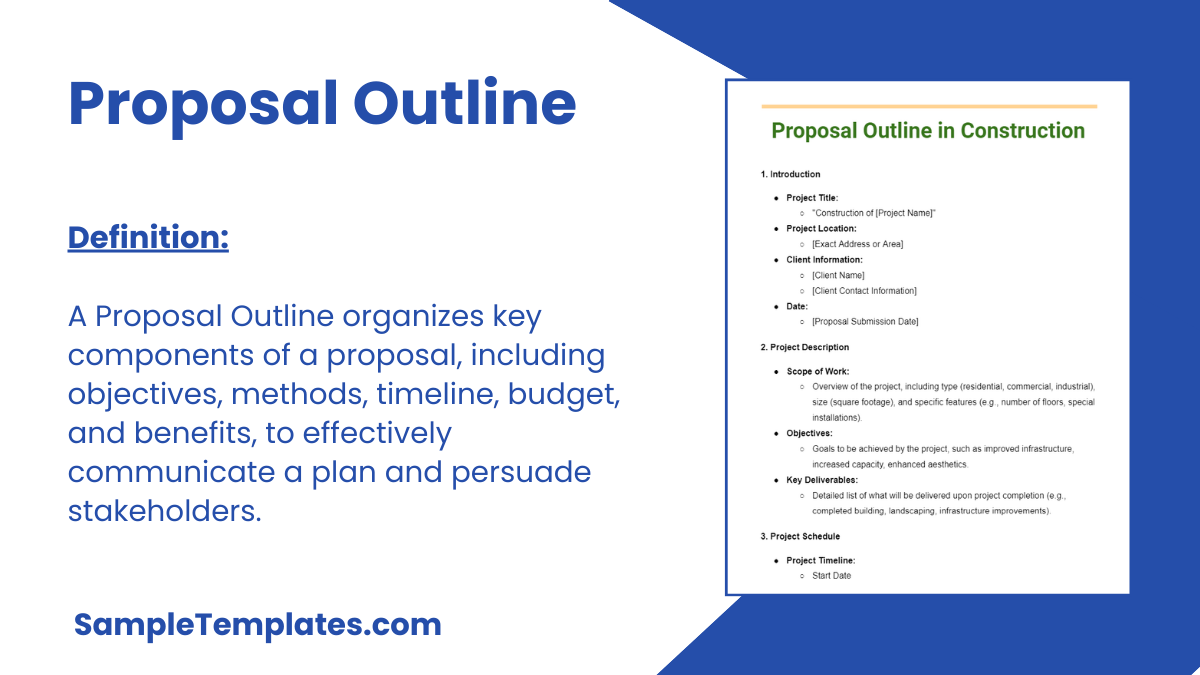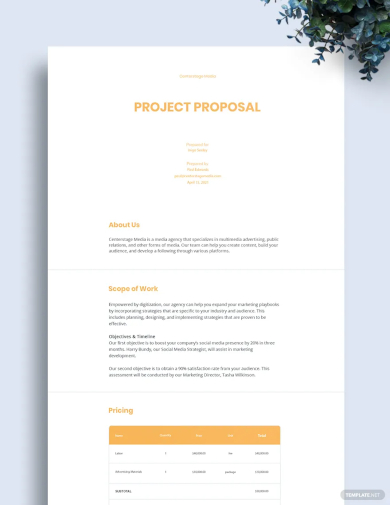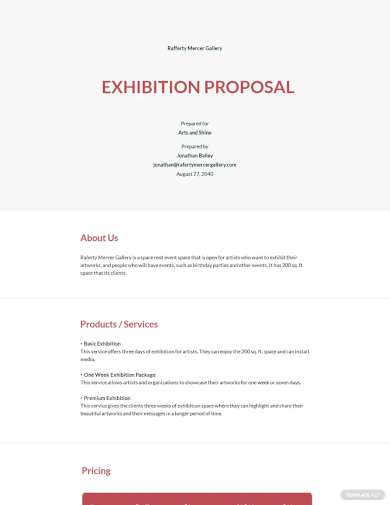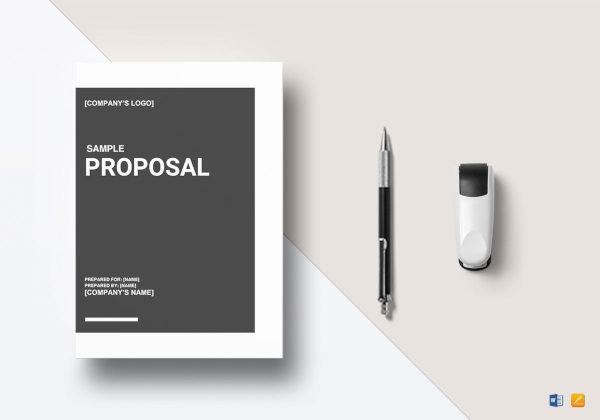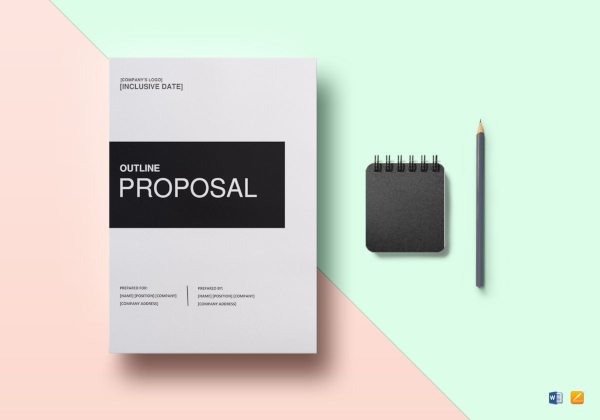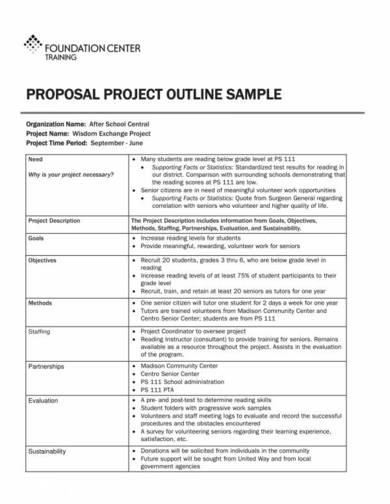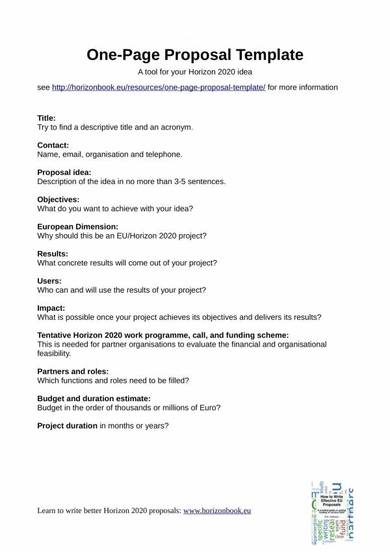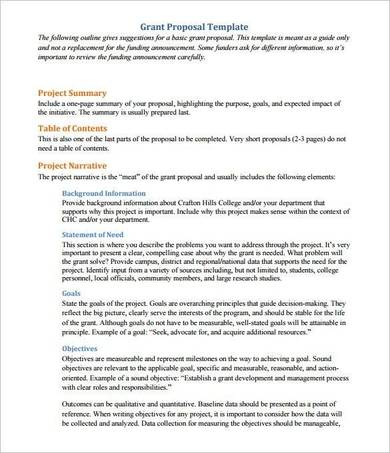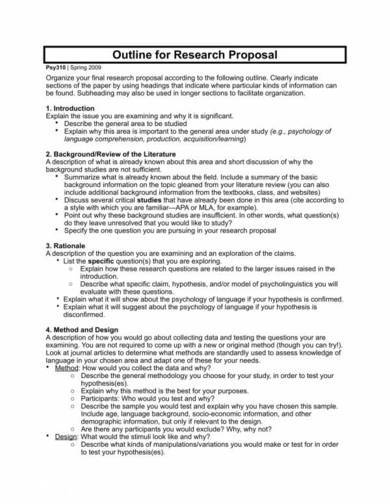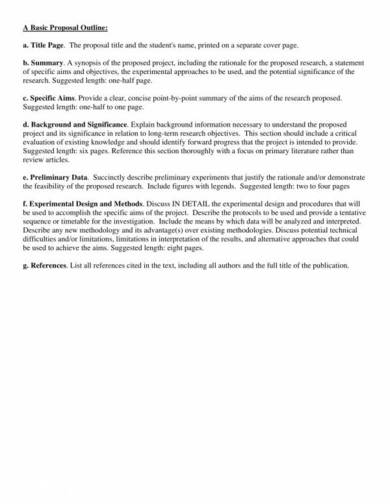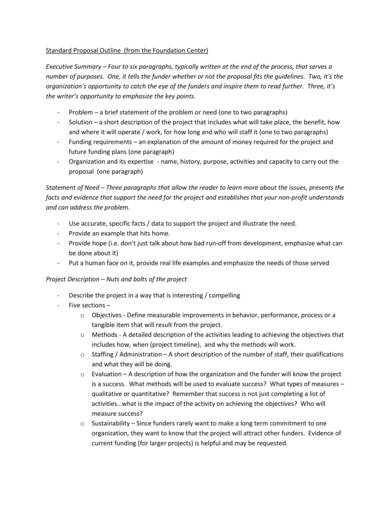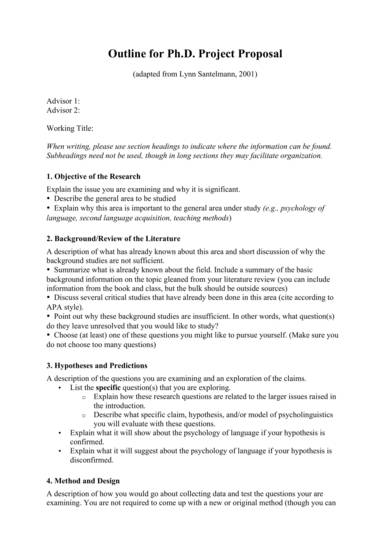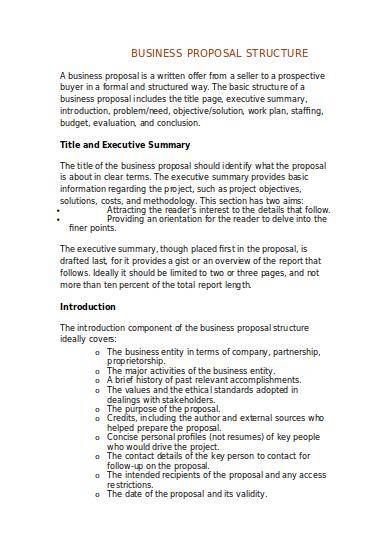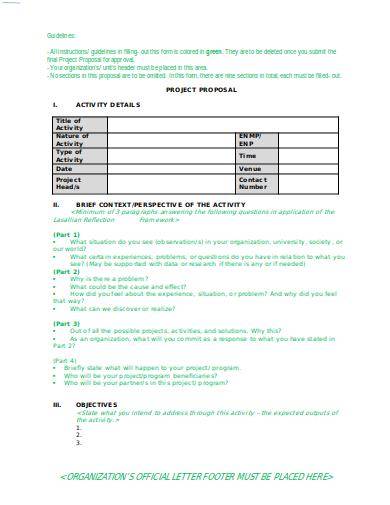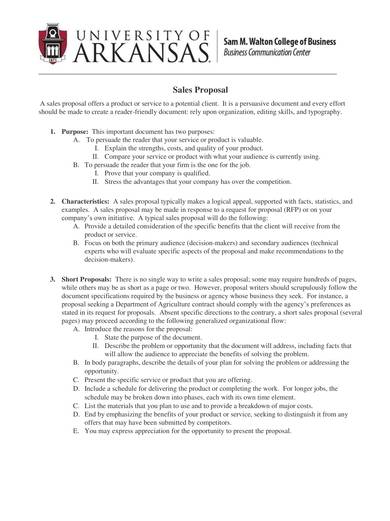Where can you find a complete list of the components of a proposal? You will be able to find a complete list of the components of a proposal in a proposal outline. Proposal writing is often seen as a difficult task, but it can be made easy through the use of a proposal outline. The outline does not only provide a complete list of the proposal’s components, but it also includes instructions and a description of what you should write in a proposal to make it relevant and useful. Checking out sample proposals and templates will also assist you in writing better proposals. Here are samples that you might want to check out.
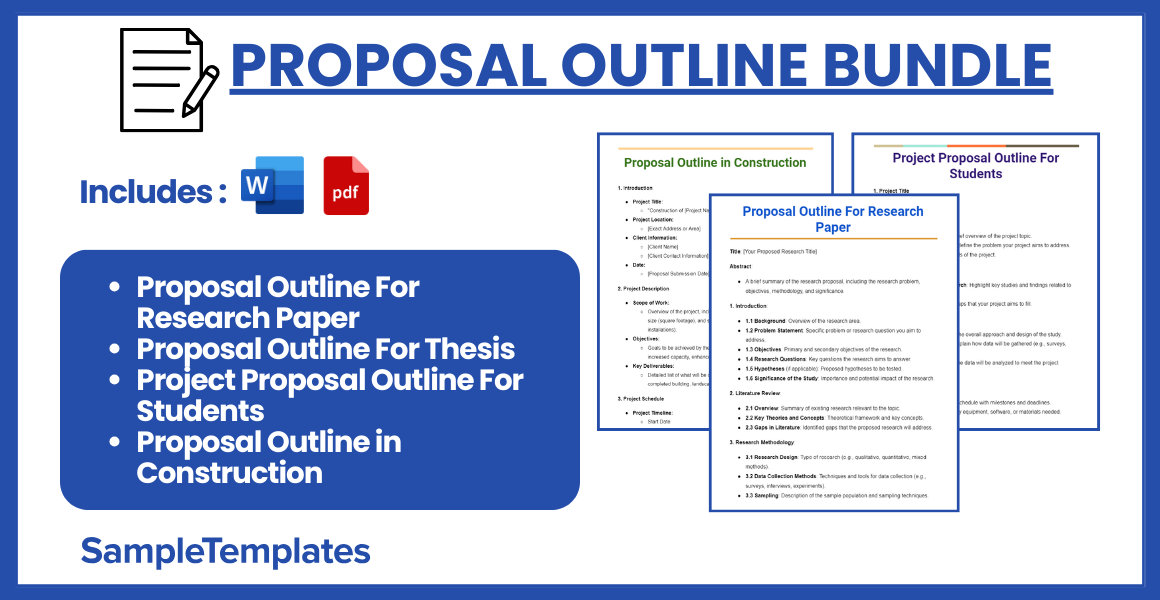
Download Proposal Outline Bundle
Proposal Outline For Research Paper
Title: [Your Proposed Research Title]
Abstract:
- A brief summary of the research proposal, including the research problem, objectives, methodology, and significance.
1. Introduction:
- 1.1 Background: Overview of the research area.
- 1.2 Problem Statement: Specific problem or research question you aim to address.
- 1.3 Objectives: Primary and secondary objectives of the research.
- 1.4 Research Questions: Key questions the research aims to answer.
- 1.5 Hypotheses (if applicable): Proposed hypotheses to be tested.
- 1.6 Significance of the Study: Importance and potential impact of the research.
2. Literature Review:
- 2.1 Overview: Summary of existing research relevant to the topic.
- 2.2 Key Theories and Concepts: Theoretical framework and key concepts.
- 2.3 Gaps in the Literature: Identified gaps that the proposed research will address.
3. Research Methodology:
- 3.1 Research Design: Type of research (e.g., qualitative, quantitative, mixed methods).
- 3.2 Data Collection Methods: Techniques and tools for data collection (e.g., surveys, interviews, experiments).
- 3.3 Sampling: Description of the sample population and sampling techniques.
- 3.4 Data Analysis: Methods for analyzing the collected data.
- 3.5 Ethical Considerations: Ethical issues and how they will be addressed.
4. Expected Results:
- 4.1 Hypothesized Outcomes: Expected findings and their implications.
- 4.2 Contribution to Knowledge: How the research will contribute to the existing body of knowledge.
5. Timeline:
- 5.1 Research Phases: Detailed timeline of the research activities and milestones.
6. Budget:
- 6.1 Estimated Costs: Detailed budget for the research, including funding requirements.
7. References:
- 7.1 Bibliography: List of references cited in the proposal.
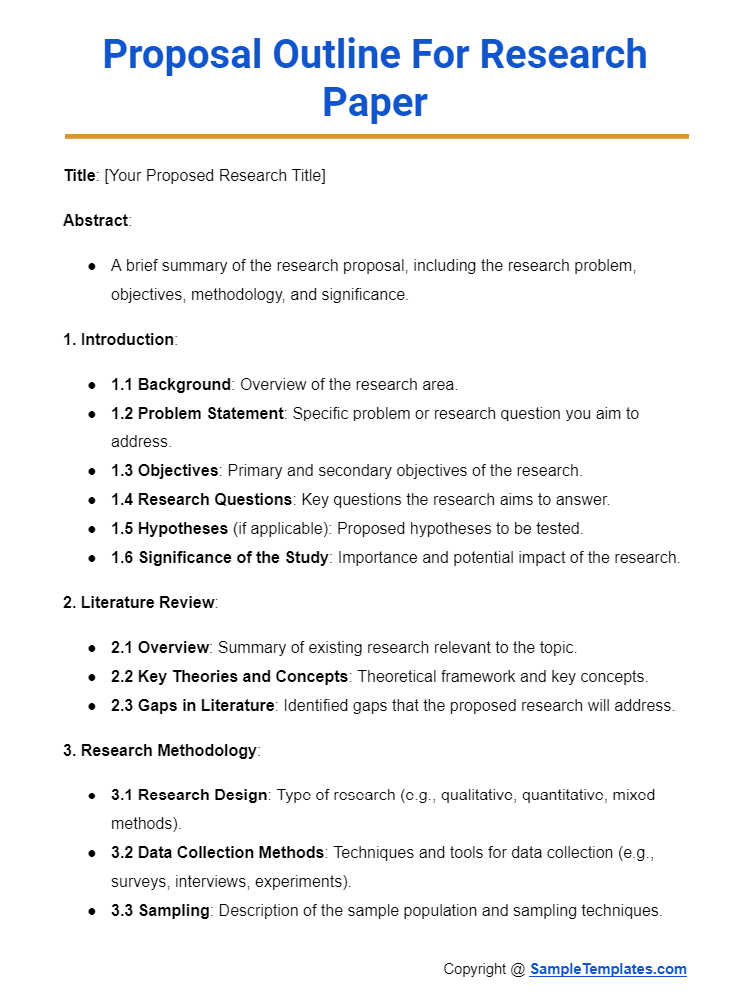
Proposal Outline For Thesis
Title
Investigating the Impact of Social Media on Academic Performance Among University Students
Abstract
This study explores the relationship between social media usage and academic performance among university students. By examining both qualitative and quantitative data, the research aims to identify patterns and factors contributing to academic outcomes. The study will address the following research questions: How does social media usage influence students’ study habits and academic performance? What are the potential benefits and drawbacks of social media in an academic context? Expected outcomes include insights into the positive and negative impacts of social media on academic performance and recommendations for optimizing its use for educational purposes.
Introduction
Background
The rise of social media has profoundly affected various aspects of life, including education. With students increasingly integrating social media into their daily routines, it is essential to understand its impact on academic performance. Previous studies have shown mixed results, highlighting both potential benefits, such as enhanced collaboration, and drawbacks, such as distractions.
Research Questions
- How does social media usage influence students’ study habits and academic performance?
- What are the potential benefits and drawbacks of social media in an academic context?
Objectives
- To analyze the correlation between social media usage and academic performance among university students.
- To identify the key factors that mediate the relationship between social media use and academic outcomes.
- To provide recommendations for optimizing social media usage to enhance academic performance.
Literature Review
Existing literature presents varied perspectives on the impact of social media on academic performance. While some researchers argue that social media facilitates peer support and access to academic resources, others contend that it contributes to procrastination and reduced attention spans. This study aims to bridge the gap by providing a comprehensive analysis of both perspectives.
Methodology
Research Design
A mixed-methods approach will be employed, combining quantitative surveys and qualitative interviews to gather comprehensive data.
Data Collection
- Surveys: A structured questionnaire will be distributed to 500 university students to quantify their social media usage and academic performance.
- Interviews: In-depth interviews will be conducted with 30 students to gain deeper insights into their experiences and perceptions.
Data Analysis
- Quantitative Analysis: Statistical techniques such as correlation and regression analysis will be used to examine the relationship between social media usage and academic performance.
- Qualitative Analysis: Thematic analysis will be applied to interview data to identify common themes and patterns.
Expected Outcomes
The study is expected to reveal both positive and negative impacts of social media on academic performance. Anticipated findings include insights into how social media can be leveraged to support academic success and strategies to mitigate its potential negative effects.
Timeline
| Milestone | Expected Completion Date |
|---|---|
| Literature Review | September 2024 |
| Data Collection | November 2024 |
| Data Analysis | January 2025 |
| Drafting the Thesis | March 2025 |
| Final Revisions | April 2025 |
| Thesis Submission | May 2025 |
References
- Smith, J. A. (2020). Social media and academic performance: A review of the literature. Journal of Educational Research, 45(3), 123-145.
- Brown, L. M. (2019). The effects of social media on college students. Educational Psychology Review, 32(2), 98-115.
- Green, P. (2018). Social networks and student engagement in higher education. International Journal of Educational Technology, 29(1), 54-67.
Appendices
- Appendix A: Survey Questionnaire
- Appendix B: Interview Guide
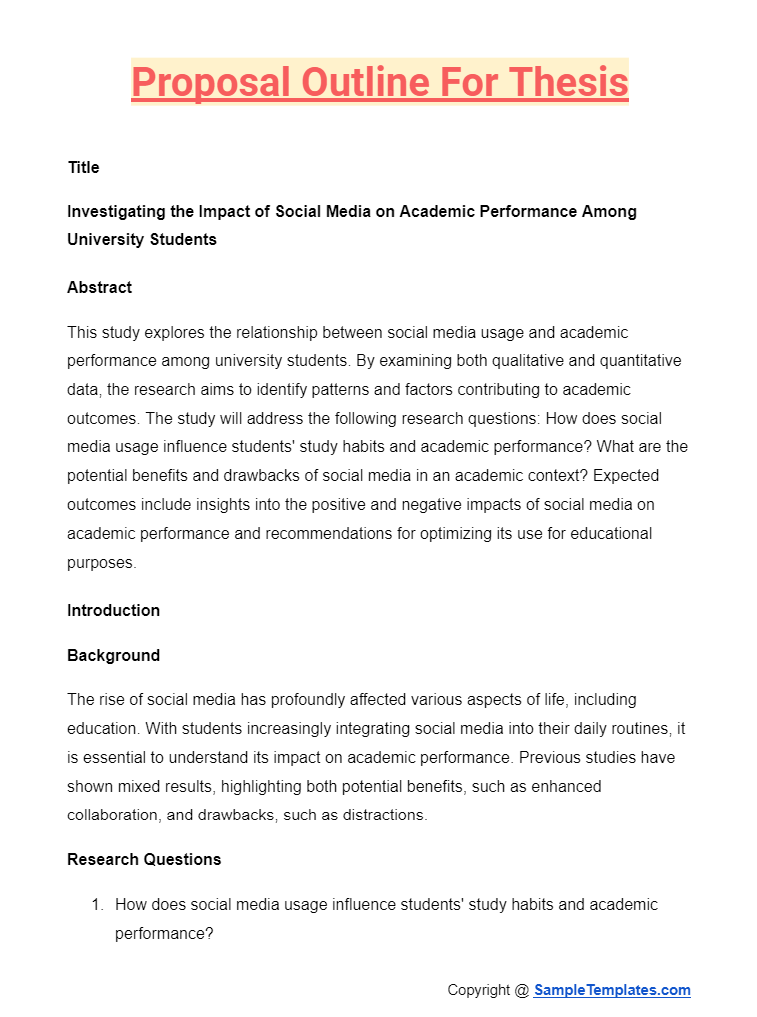
Project Proposal Outline For Students
1. Project Title
- Name of the Project
2. Introduction
- Background Information: Brief overview of the project topic.
- Problem Statement: Clearly define the problem your project aims to address.
- Objectives: List the main goals of the project.
3. Literature Review
- Summary of Existing Research: Highlight key studies and findings related to your topic.
- Gaps in Research: Identify gaps that your project aims to fill.
4. Methodology
- Research Design: Describe the overall approach and design of the study.
- Data Collection Methods: Explain how data will be gathered (e.g., surveys, experiments, observations).
- Data Analysis: Outline how the data will be analyzed to meet the project objectives.
5. Project Plan
- Timeline: Provide a detailed schedule with milestones and deadlines.
- Resources Required: List any equipment, software, or materials needed.
- Budget: Estimate the costs associated with the project (if applicable).
6. Expected Outcomes
- Deliverables: List the tangible products or results that will be produced.
- Impact: Explain the potential significance and benefits of the project.
7. Evaluation
- Success Criteria: Define how the success of the project will be measured.
- Evaluation Methods: Describe the tools and techniques that will be used to assess the project’s outcomes.
8. Conclusion
- Summary: Recap the key points of the proposal.
- Call to Action: Suggest the next steps or ask for approval to proceed.
9. References
- Citations: List all sources referenced in the proposal.
10. Appendices
- Supplementary Materials: Include any additional information that supports the proposal (e.g., charts, graphs, detailed data).
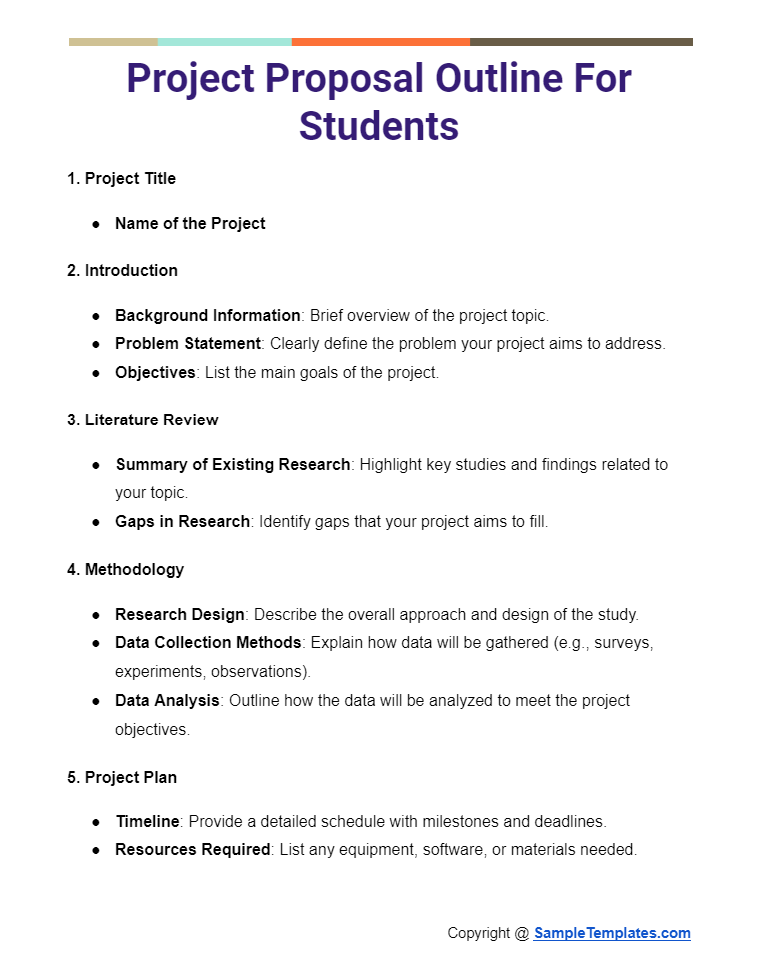
Proposal Outline in Construction
1. Introduction
- Project Title:
- “Construction of [Project Name]”
- Project Location:
- [Exact Address or Area]
- Client Information:
- [Client Name]
- [Client Contact Information]
- Date:
- [Proposal Submission Date]
2. Project Description
- Scope of Work:
- Overview of the project, including type (residential, commercial, industrial), size (square footage), and specific features (e.g., number of floors, special installations).
- Objectives:
- Goals to be achieved by the project, such as improved infrastructure, increased capacity, enhanced aesthetics.
- Key Deliverables:
- Detailed list of what will be delivered upon project completion (e.g., completed building, landscaping, infrastructure improvements).
3. Project Schedule
- Project Timeline:
- Start Date
- Key Milestones (e.g., foundation completion, structural framing, roofing, interior finishes)
- Estimated Completion Date
- Gantt Chart or Timeline Graphic:
- Visual representation of the project schedule (optional but recommended).
4. Budget Estimate
- Detailed Cost Breakdown:
- Materials
- Labor
- Equipment
- Permits and Fees
- Contingency
- Total Project Cost:
- Summary of the total estimated cost.
- Payment Schedule:
- Milestone-based payment structure (e.g., percentage at signing, foundation completion, project midpoint, final inspection).
5. Project Team
- Key Personnel:
- Project Manager: [Name, Qualifications]
- Architect/Designer: [Name, Qualifications]
- Lead Engineer: [Name, Qualifications]
- Foreman/Site Supervisor: [Name, Qualifications]
- Subcontractors:
- List of key subcontractors, including their scope of work and qualifications.
6. Methodology
- Construction Approach:
- Description of the construction methods and techniques to be used.
- Quality Control:
- Measures to ensure high-quality workmanship and materials.
- Safety Plan:
- Outline of safety protocols and procedures to protect workers and the public.
7. Environmental and Regulatory Compliance
- Permits and Approvals:
- List of required permits and status of applications.
- Environmental Impact:
- Assessment of potential environmental impacts and mitigation strategies.
- Regulatory Compliance:
- Confirmation of compliance with local, state, and federal regulations.
8. Risk Management
- Risk Assessment:
- Identification of potential risks and their impact on the project.
- Mitigation Strategies:
- Plans to address and reduce the impact of identified risks.
9. Communication Plan
- Stakeholder Engagement:
- Strategies for keeping stakeholders informed and involved.
- Reporting:
- Schedule and format for regular project updates and reports.
10. Conclusion
- Summary:
- Recap of the project’s key points and benefits.
- Call to Action:
- Next steps for the client to proceed with the proposal.
- Contact Information:
- Details for the primary contact person for further inquiries.
11. Appendices
- Supporting Documents:
- Architectural drawings, site plans, contractor licenses, insurance certificates, etc.
- References:
- Testimonials or case studies from previous projects.
Prepared by:
[Your Name]
[Your Title]
[Your Company]
[Contact Information]
Reviewed by:
[Client Name]
[Client Title]
[Client Company]
[Contact Information]
Date of Approval:
[Date]
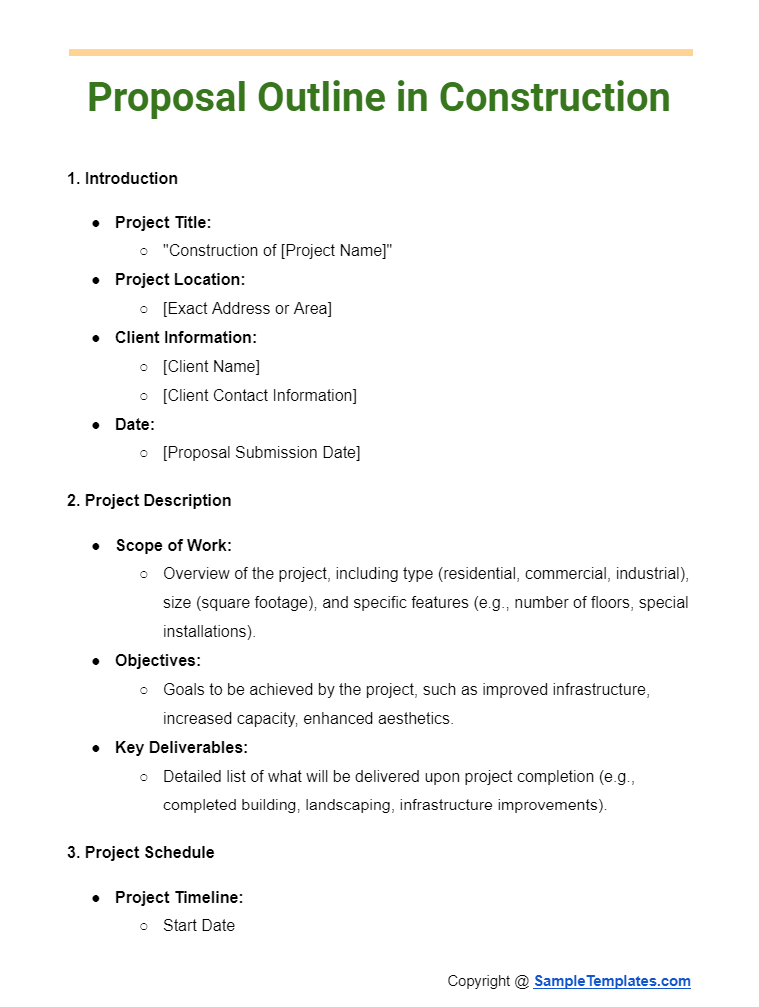
Browse More Templates On Proposal Outline
1. Project Proposal Outline Template
2. Proposal Outline Template
3. Free Exhibition Proposal Outline Template
How to Create a Winning Project Proposal?
- Thoroughly Understand the Client’s Needs:
- Conduct in-depth research on the client’s requirements, goals, and pain points. Tailor your proposal to address these specific needs, demonstrating a clear understanding of their objectives and how your project will meet or exceed their expectations.
- Provide a Clear and Detailed Plan:
- Outline a comprehensive project plan that includes a clear scope of work, timeline, budget, and key milestones. Use visuals such as Gantt charts and diagrams to make complex information easily understandable and ensure all aspects of the project are covered.
- Showcase Your Expertise and Experience:
- Highlight your team’s qualifications, past successes, and relevant experience. Include case studies, testimonials, and examples of similar projects you’ve completed to build credibility and trust with the client.
- Emphasize Value and Benefits:
- Focus on the value and benefits the client will gain from your project. Explain how your approach will solve their problems, improve their operations, or deliver outstanding results. Use quantifiable data and projections to support your claims.
- Maintain Professionalism and Clarity:
- Ensure your proposal is well-organized, professionally formatted, and free of errors. Use clear, concise language and avoid jargon. Include a strong executive summary that captures the essence of your proposal and engages the client from the start.
4. Basic Proposal Outline Template
5. Sample Proposal Outline Template
6. Proposal Project Outline Template
You’ll be required to create a project proposal if there is a new project or job that your organization wants to up. Your proposal will be subject to approval, depending on how well it is written. A wonderful way to write a project proposal is through the use of a reliable and relevant project proposal outline. We highly recommend the sample shown above for your use. You’ll find it easy to use this outline because the details are arranged in an organized manner.
Importance of Proposal Outline

- Provides Structure and Organization:
- A proposal outline ensures that all necessary components of the sample proposal are included and logically arranged. It helps in organizing thoughts and information systematically, making the proposal coherent and easy to follow.
- Saves Time and Effort:
- By having a clear outline, you can streamline the writing process, focusing on developing each section without worrying about what comes next. It reduces the chances of omitting important details, thus saving time and effort in revisions.
- Ensures Completeness:
- An outline acts as a checklist to ensure that every crucial aspect of the proposal is covered. This includes project scope, sample budget, timeline, team credentials, and risk management, leaving no room for gaps or omissions.
- Enhances Clarity and Focus:
- A well-structured outline helps maintain clarity and focus throughout the proposal. It allows you to present information in a clear, concise manner, ensuring that the reader can easily understand and follow the proposal’s key points.
- Facilitates Collaboration:
- When multiple team members are involved in drafting the proposal, an outline provides a common framework for collaboration. It ensures consistency in content and style, making it easier for team members to contribute effectively.
- Improves Persuasiveness:
- A logical and well-organized proposal is more persuasive. An outline helps in strategically placing compelling arguments, evidence, and benefits where they will have the most impact on the reader, increasing the chances of proposal acceptance.
- Identifies Potential Issues Early:
- Creating an outline allows you to identify and address potential issues or gaps in the proposal early in the process. This proactive approach helps in refining the proposal and making necessary adjustments before the final submission.
- Professional Presentation:
- A simple proposal that follows a clear outline appears more professional and polished. It reflects attention to detail and a methodical approach, which can positively influence the client’s perception and confidence in your capabilities.
7. One-Page Proposal Outline Template
The sections included in a one-page proposal outline consists of the title, contact, proposal idea, objectives, dimension, results, users, impact, tentative horizon, partners and roles, project duration, and budget and duration estimate. All these are essential in making a complete one-page proposal. The description provided under each section will also help you out with writing the appropriate content for the proposal you are working on. This outline template will definitely be worth your while.
8. Grant Proposal Outline Template
It is essential for a grant proposal to be persuasive and detailed. This is because the proposal is used to request for monetary support for a certain cause in the form of a grant. There are a lot of different causes out there that need a grant, and it is upon the proposal writer to make their proposal matter. If you need help writing an effective and persuasive grant proposal, then you will need to check on several grant proposal outlines. Here is where you’ll be able to get ideas on how you can clearly explain in your proposal why you should be awarded the grant.
Types Of Proposals
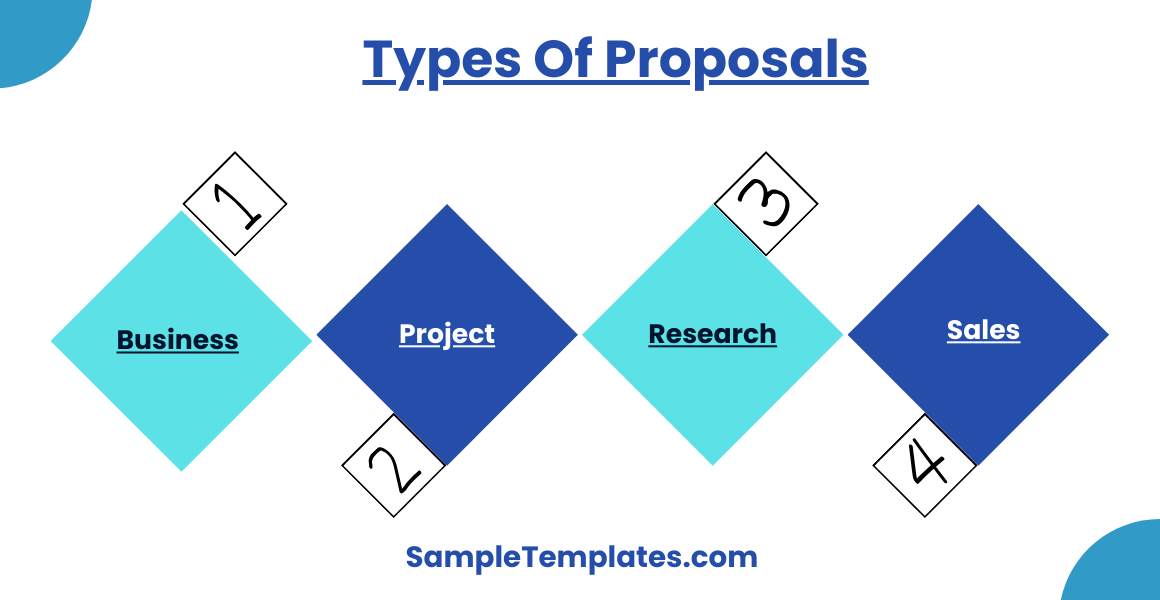
- Business Proposals:
- Purpose: To offer products or services to potential clients or partners.
- Example: A company submitting a proposal to provide IT services to another business.
- Project Proposals:
- Purpose: To outline plans for a specific project, seeking approval or funding.
- Example: A construction firm presenting a proposal for building a new office complex.
- Research Proposals:
- Purpose: To request funding or approval for a research project.
- Example: A university professor seeking a grant to conduct a scientific study.
- Sales Proposals:
- Purpose: To persuade potential customers to purchase a product or service.
- Example: A software company proposing its new application to a prospective client.
- Grant Proposals:
- Purpose: To secure funding from government agencies, foundations, or other organizations.
- Example: A non-profit organization submitting a proposal to obtain funds for a community development project.
9. Sample Outline for Research Proposal Template
Research proposals can be written in a variety of ways, depending on the preferences of the writer. They are often written according to the format provided by one’s professor or the standard format required by an organization. But if you are given the freedom to use any format or outline of your choice, you can consider using the sample shown above. The provided outline is detailed and will give you the exact kind of help that you need to come up with an effective proposal. View this outline sample to learn more.
10. Basic Proposal Outline Example
How do you write a proposal? Writing a proposal can be made easy if you use the right tools that will guide you with the entire process. We are actually referring to a basic proposal outline sample. Before you go about personalizing or customizing your proposal, you should start with the basics. Through this basic proposal outline, you’ll learn a lot of things and that includes creating your own proposal style in the future. This sample is also perfect for complete beginners or those who have never written a proposal before. Using this sample will surely do you a lot of good.
11. Standard Fundraising Proposal Outline Template
If you don’t know how to get started with your fundraising proposal, then this standard fundraising proposal outline will give you some help. This is a two-page outline sample that is specifically created for writing a proposal for foundation centers. What will you find in this outline? There is a list of the parts of a proposal and a detailed description of the content that should go into every section. This way, your proposal will be effective and relevant to your cause.
Tips For Writing a Proposal Outline
- Understand the Purpose and Audience:
- Tailor your outline to meet the specific needs and expectations of your audience. Understand the purpose of the Formal proposal and what the decision-makers are looking for.
- Start with a Strong Introduction:
- Begin with a clear and concise introduction that summarizes the proposal’s key points, objectives, and the problem it aims to solve. Make it engaging to capture the reader’s interest.
- Define Clear Sections:
- Break down the proposal into clearly defined sections such as introduction, project description, schedule, budget, team, methodology, and conclusion. This ensures that all critical components are covered.
- Be Detailed but Concise:
- Provide enough detail to convey your message and address all necessary points, but avoid unnecessary jargon and verbosity. Keep each section focused and to the point.
- Use Bullet Points and Headings:
- Utilize bullet points, numbered lists, and headings to organize information within each section. This makes the outline easier to read and follow.
- Incorporate Visual Aids:
- Plan for the inclusion of visual aids such as charts, graphs, and diagrams to illustrate key points, timelines, or data. Visuals can enhance understanding and retention.
- Allow for Flexibility:
- While an outline provides structure, allow some flexibility for adjustments as you develop the proposal. Be open to reorganizing sections if it improves the flow or clarity.
- Review and Revise:
- After creating the initial outline, review it critically to ensure it covers all necessary aspects. Revise as needed to improve organization, clarity, and completeness before starting the full proposal. You can also see more on Work Proposals.
12. Sample Outline for Ph.D. Project Proposal Template
You can use this Ph.D. project proposal as reference to assist you with writing a similar proposal for your dissertation, especially if there are no specific instructions provided for you to strictly follow when it comes to formatting. The sample is detailed and comprehensive and using it will ensure that you won’t be missing any important parts or details of your proposal. You will surely find this outline sample useful. Read this sample to learn more.
13. Sample Business Proposal Outline Template
How do you write a business proposal? Writing a business proposal may seem difficult at first until you come across a sample outline that will help you complete the task conveniently. We are actually referring to the sample business proposal outline provided above. Why this outline sample? That is because it has everything that you need to come up with a complete and reliable proposal that your business can proudly present to its clients and prospective customers.
14. Organization Project Proposal Outline Template
Modify and make changes to this sample proposal outline sample however you want. This customizable outline sample gives you the freedom to add or remove certain information in the proposal to make it exactly the proposal that you want to create. You save so much time just by using this sample outline. You can also see more on Organization Proposal.
15. Sample Sales Proposal Outline Template
This sample sales proposal outline is taken from the University of Arkansas so you know that it’s from a reliable source. When you get something from a reliable source, you know that you’ll end up producing a reliable output that you can be proudly present to your clients and prospective customers.
What are the 3 C’s of proposal writing?
The 3 C’s of proposal writing are Clear, Concise, and Compelling. Ensure your proposal is easy to understand, direct to the point, and persuasive to capture and retain the reader’s interest.
How long should a proposal outline be?
A proposal outline should be long enough to cover all key sections comprehensively but concise enough to maintain clarity and focus. Typically, it spans 1-2 pages, depending on the complexity of the proposal.
How to write a proposal step by step?
Identify the client’s needs, define objectives, and research thoroughly. Outline the proposal structure, draft each section clearly, and use supporting data. Review, edit for clarity and conciseness, and ensure all client requirements are addressed. You can also see more on IT Proposal.
What does outline your proposal mean?
Outlining your proposal means creating a structured framework that organizes the main sections and key points. This provides a roadmap for writing the full proposal, ensuring all essential elements are included and logically arranged.
The proposal aims to address key issues with innovative solutions, aligning goals and strategies. Successful implementation promises substantial benefits, driving progress and achieving desired outcomes efficiently.
Related Posts
FREE 10+ Product Supply Proposal Samples in MS Word | Google Docs | Apple Pages | PDF
FREE 10+ Health Project Proposal Samples [ Public, Mental, Healthcare ]
FREE 11+ Engineering Project Proposal Samples in PDF | MS Word
FREE 4+ Racing Sponsorship Proposal Samples [ Team, Car, Driver ]
FREE 10+ Nursing Project Proposal Samples [ Community, Health, Clinical ]
FREE 11+ Student Council Proposal Samples in PDF | DOC
FREE 10+ Facilities Management Proposal Samples in MS Word | Google Docs | Apple Pages | PDF
FREE 8+ Joint Venture Proposal Samples [ Commercial, Real Estate, Construction ]
FREE 10+ Scholarship Proposal Samples [ Project, Grant, Sponsorship ]
FREE 10+ Computer Purchase Proposal Samples in MS Word | Google Docs | Apple Pages | PDF
FREE 10+ Network Project Proposal Samples [ Design, Security, Bank ]
FREE 14+ Accounting Proposal Samples in PDF | MS Word
FREE 10+ Church Event Proposal Samples in MS Word | Google Docs | Apple Pages | PDF
FREE 10+ History Proposal Samples [ Dissertation, Thesis, Paper ]
FREE 34+ Sponsorship Proposal Samples in PDF | MS Word | Pages | Google Docs
